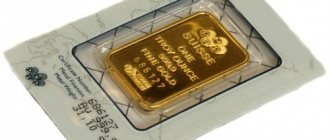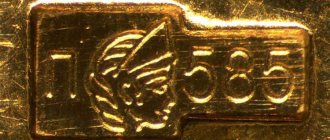In various sources translated into Russian, you can often find mention of an ounce. It is a unit of mass, weight or volume used in most British traditional systems of measurement. A typical ounce of avoirdupois (approximately 28.3 g) is 1/16 of the total weight of a pound.
This is a classic unit of measurement for the USA and Britain. It is mainly used in the United States of America for weighing packaged foods and portions, postal items, as well as for determining the density of fabric and paper, boxing gloves, etc. It can sometimes be found in the English-speaking sphere for other processes.
You will be interested: General Berezin Alexander Dmitrievich: biography, military service, memory
Varieties
In addition to the regular one, several other ounces are currently in use. These can be measurements of different quantities. This unit is used not only to clarify weight. It is used in the following cases:
- A troy ounce, weighing about 31.1 grams, is used to determine the mass of precious metals such as gold, silver, platinum, palladium, rhodium, etc.
- Ounce-force is a measure of weight, that is, mass.
- Fluid ounce is a measure of volume.
Historically, it was used in many industries in various fields where it was necessary to measure mass or volume.
How to convert ounce to grams
This can be done using an online calculator. To find out how many grams there are in an ounce of gold, you need to enter the number of ounces and the calculator will automatically convert it to grams. The troy ounce is a kind of royal symbol for measuring gold.
Some coins are equal in weight to exactly a troy ounce:
- USA golden eagle
- golden buffalo usa
- Gold bar Australia
- Panda China
- Krugerrand South Africa
- Maple Leaf Canada
- Philharmonic Australia
The ancient city of Troy in no way influenced the name of the troy ounce. The troy ounce was named after a small town in France - Troyes. This city became popular in the twelfth century because it hosted fairs with the participation of merchants from all over the world.
Previously, each country used its own system to measure the value of gold, which constantly created difficulties. At first it was proposed to take the livre as the universal standard; the same system included the troy pound. Soon the troy ounce became the main way to determine precious metals.
Etymology of the name
You may be interested in: Division of multi-digit numbers: types, rules, properties and examples of solutions
Where does the term "ounce" come from? This name comes from the Latin uncia, a unit that was one twelfth of the Roman pound (a measure of weight).
The name was borrowed twice. Old English was first spoken as "insan" or "indsan" (a corrupted form of Latin). Then the word "ounce" began to be used in late medieval English.
The abbreviation oz came later from the related Italian word onza (now spelled oncia).
Measures
So, an ounce is, of course, not only a weight standard. These are also two units of volume and one of force. In general, to find out the mass, there are several ounces. The Romans, as mentioned above, also used it to measure length, area, capacity and even the size of an inheritance. Thus, 1 ounce of length in Ancient Rome was equal to 0.0246 meters. And the surface (area) there was measured using jugers. Accordingly, one twelfth of it - 1 ounce - is equal to 209.91 meters.
Why is there no single standard
An ounce is a unit that is measured in different ways. The explanation for this is as follows. It has been used historically in many parts of the world, at different points in history, and for different applications. Therefore, unequal mass standards were taken as a basis.
How much does an ounce weigh in different values? The international version of avoirdupois calls 28.349523125 437.5 grams. An international troy ounce is 31.1034768 480 grams, a French ounce is 30.59 grams. There are other numerical values. It is worth learning more about what types of this unit of measurement are used in the modern world.
Where does the name of the unit of measurement come from?
The name of the troy ounce presumably comes from the French city of Troyes, a center of international trade known since the 9th century. The first mention of the troy ounce dates back to 1390. In Troyes, which at that time was one of the most important centers of trade in the world, a standard system of measures was introduced to simplify the exchange of goods between traders from different countries. The basis for the standardized measure of weight was the French livre, which included the troy pound of silver. Soon, by order of the English king with French roots, Henry II , troy units of measurement - grains, ounces and pounds - began to be used in England.
These weights were also used to weigh grain crops. In addition, the troy ounce was used by pharmacists at that time to determine the weight of drugs.
The previously existing Troyes system of measures is now outdated; troy ounces are actively used only in banking and jewelry as a noble standard for the weight of precious metals.
International avoirdupois system (oz)
An international ounce is 28.349523125 grams, according to the International Yard and Pound Agreement of 1959. It was signed by the United States of America and the countries of the Commonwealth of Nations.
In the avoirdupois system, sixteen ounces equal a pound with the same name. It is defined as follows: 7000 grains. Therefore, one ounce totals 437.5 grains.
It is still the standard unit of weight in the United States. In the UK it ceased to be a legal unit of measurement in 2000, but is still widely used on an informal basis. It is also the traditional measure of portion sizes in British restaurants.
How much does a troy ounce of silver or gold cost?
In the period from 1919 to 2015, with the exception of the Second World War, the price of gold or silver was determined by the international interbank exchange in London, assigning the so-called “London fixing”. Since 2015, this system has been changed. Now, every day twice, at 10-30 and 15-00 GMT, a new price for precious metals is announced based on the ongoing electronic auctions.
Previously, only 5 main companies producing and selling precious metal bullions took part in determining the value of gold and silver. Currently, there are about 13 banking organizations from countries such as Switzerland, France, Canada, the United States of America, China and the Republic of South Africa. The Russian Federation is not included in this list.
The price of the precious metal fluctuates daily. Therefore, in order to navigate market dynamics and build the right investment strategy, it is necessary to constantly monitor the information available on the Internet.
To summarize what has been written, we can say that now you probably understand why the cost of an ounce of precious metals such as gold or silver is exactly 31.1035 times more than the cost of one gram, and also why the ounce itself is called “troy”.
International troy ounce (ozt)
This unit of measurement is 480 grains. Therefore, a troy unit is equal to 31.1034768 grams. There are 12 troy ounces in the now obsolete pound of the same name.
Today this measure is used only to express the mass of precious metals such as gold, platinum, palladium, rhodium or silver. Bullion coins are the most common product produced and sold in troy ounces. However, precious metal bars also exist in grams and kilograms.
What is the ounce weight of these items? A kilogram bar contains 32.15074657 troy ounces. Throughout history, this measure was actively used to weigh gold. It has the following classification:
- Fine is a troy ounce that measures the pure gold content of a bar. It is calculated as follows: sample multiplied by gross weight.
- The standard is a measure of 22 carat gold with a purity of 91.66% (the proportion of precious metal to alloy is 11: 1).
Modern use of this unit of measurement
Today, all trading operations with gold and silver in the international precious metals market are carried out on the basis of the troy ounce, as the only accepted measure of weight. In the display of stock quotes, it is indicated in a special way:
- for silver - XAG;
- for gold - XAU;
- for palladium - XPD;
- for platinum - XPT.
When issuing coins made of gold, silver and other precious metals, foreign central banks also measure their weight in fractional parts of an ounce.
This is not accepted in Russia, and the mass of coins issued by the Central Bank is calculated in grams. But it often happens that mass still forms some part of the universal unit of measurement. Thus, St. George the Victorious with a nominal value of 50 rubles contains 7.78 grams of gold, which corresponds to a quarter of a troy ounce. And the same silver coin with a nominal value of 3 rubles is made from 1 troy ounce.
Metric ounces
Some countries have revised these units to the metric system. Therefore, the question of how many grams are in an ounce will have different answers. This depends on the country of application. For example, the German apothecary ounce weighing 30 grams is very close to the previously widespread Nuremberg one. However, its divisions and multiples are expressed in the metric system.
In 1820, the Dutch redefined their ounce (in that country its abbreviation is ons). In the Netherlands it is 100 grams. Such amendments to the metric system were also adopted and used in Indonesia. In particular, they are studied according to the general education curriculum of primary schools. This measure is also mentioned in the Indonesian national dictionary.
American system of measures
In the United States, pounds are still used to measure weight. And along with them, therefore, ounces. But again, not the same as everywhere else.
Avoirdupois or the so-called trading ounce. Used for selling goods by weight. In the metric system its value is 28.349 g.
The US fluid ounce is used to measure volumes. It is approximately 29.537 ml. When indicating the volume on food packages, for convenience, it is equated to 30 milliliters. The British, by the way, have their own fluid ounce. Its volume is 28.413 ml.
Fluid ounce
It is a unit of volume equal to approximately 28.4 ml in the English system. In the US the figure is about 29.6 ml.
A fluid ounce (fl oz) was originally the volume occupied by products such as wine (in England) or water (in Scotland). The meaning of the unit in question varied depending on the system of liquid measurement (such as used for wine or ale).
Various ounces have been used over the centuries, such as Tower and Troy. In international trade, the French one was especially popular. Therefore, the value of ounce in ml has always been different. The situation was aggravated by medieval practice, when a unit of measurement was not necessarily equal to the sum of its parts.
In 1824, the British Parliament defined a gallon as the volume of ten pounds of water at a standard temperature. It was divided into four quarts, a quart into two pints, a pint into four jills, and the last into five ounces. For many, this system seems quite confusing. According to it, there were 160 British fluid ounces per gallon. The result was that the weight of water in this measurement system was approximately 28.4 grams. This relationship is approximately correct even though the definition of the imperial gallon has already been revised to 4.54609 liters, resulting in a fluid ounce volume of 28.4130625 ml.
Word
Without a doubt, this is a term of Latin origin. In ancient Rome, this was the name given to one twelfth of the libra, the basic measure of weight. However, not only mass was measured with it. In general, it may seem that the Romans were very fond of this word.
They often said: “I walked four ounces of the way to...” or “I read three ounces of the book.” What did this mean? Is it really possible to measure distance using scales? Of course not. An ounce is another twelfth of something. Well, either one tenth or thirteenth - depending on the country and time. So what else was measured for her? And How? Also in Ancient Rome, an ounce was called a coin. When minting, one dot was placed on it. The coin, of course, had a small denomination. It was made from an alloy of tin, copper and lead. Some Spanish (doubloons) and Chinese gold coins were also called this way.
Interesting Facts About Ounces
- Few people know that in addition to a measure of weight, 1 ounce can be represented as a measure of liquid volume, or 1 fl oz, so 1 ounce in grams will be equivalent to 30 ml of liquid.
- Freely convertible currencies currently account for 15% of the entire financial market;
- 1 pharmacy ounce is 29.860 grams. This value was widespread until 1930, then lost its validity;
- Not every person knows about Maria Theresa's ounce, which was 31.1025 grams. This coin was forged many times, and finally, for the tenth time, it came out the way the queen wanted.










